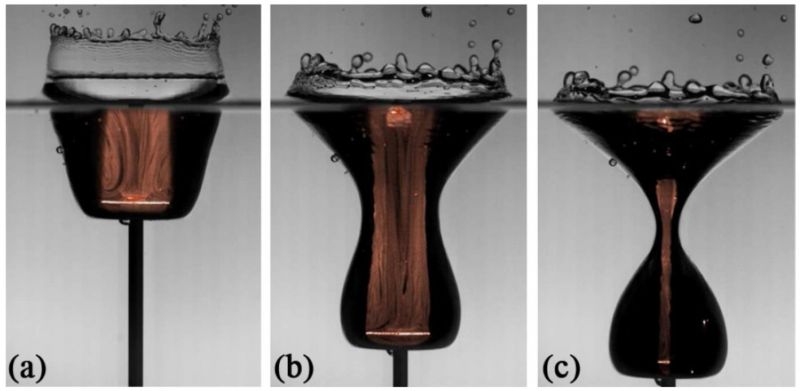Supersonic air flow
In Gekle et al. Phys. Rev. Lett. 104, 024501 (2010) we use visualization experiments with fine smoke particles to measure the air flow as it is squeezed out of the shrinking impact cavity. Together with multiscale simulations combining our boundary-integral method with a fully compressible Euler solver, we show that even in our simple system of a 2 cm disc impacting at merely 1 m/s the air flow easily attains supersonic velocities. The mechanism to produce these high speeds is very similar to that used in converging-diverging (“de Laval”) nozzles for e.g. air plane jet engines. The key difference is that in our case the confining cavity is a liquid which is rapidly evolving in time – a situation for which no equivalent exists in the scientific or engineering literature.

Figure 1: Visualization of the air flow inside the cavity by illuminating smoke particles with a laser sheet (artificially colored in orange here). Just before pinch-off (c) the air flow attains supersonic speeds.
See the links below for the other subtopics:
Info: Devaraj van der Meer
